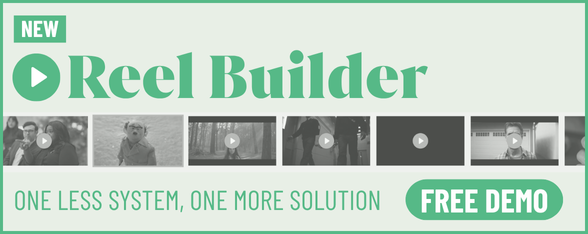
“Digital Before It Was Cool”: How the Electric Factory Is Leading Innovation in the USA from Its Home Country

Juan Ciapessoni co-founded The Electric Factory in 1997 before digital had made its way into adland’s mainstream. He’s since grown the company to become a leading digital creativity hub and a serious international player in the digital innovation and advertising sector.
They’re majorly embedded in the world of augmented reality too, having worked with the likes of McDonald's, Pepsico, and Netflix to bring filters to life across Facebook, Instagram and Snapchat.
Juan calls The Electric Factory a “Creative Innovation Company” - but what does this mean, for a company that creates content for both agencies and brands directly and which won Best Boutique Agency of the Year at the New York Festivals this year?
When you look at what they have been creating for their mixed client base, they are a true hybrid model that fits into the next generation of creative companies who can provide boundary-breaking ideas and strategy alongside the means to physically make the ideas a reality.
“I don't believe that we are just doing one simple thing,” he tells LBB. “So the approach of The Electric Factory has always been to combine our knowledge, our expertise, and our attributes together in order to solve problems for any industry and take the shape that we should take in order to solve those problems.”
“We combine strategy, creativity, and technology to solve problems,” Juan reiterates. The company specialises in digital production, AR, VR, animation, live action, and physical installations.
The Electric Factory is an official partner of Facebook's Spark AR platform, creating dazzling filters for the likes of HBO and Netflix.
The advantages of adopting digital early on
“We’ve worked in digital since before it was cool,” Juan tells LBB, and says that in his industry, it is easy to become narrow-minded or too focused on one style of work.
“We should be explorers, and we should not be too deep into one area because if you know too much about something, you lose perspective and the opportunity to surprise yourself,” he says. “Be a tourist of the world.”
The Electric Factory’s work with Toyota for the HY Project made waves at this years’ Cannes Lions - it won silver and bronze, and Fast World chose it as one of the eight finalists for the World Changing Ideas Awards last year.
The project came about after legislation proposed that any new hybrid and electric cars must emit artificial sound as a safety measure. The Electric Factory teamed up with Toyota to see if there was a way of the noise benefiting the environment too without contributing to sound pollution.
The result was a sound system that stimulated plant growth with frequencies designed to not add to noise pollution - benefiting animals who are often the ones put at risk by the increased noise pollution.
“Sometimes, the goal is just a change of perspective,” he says about the project’s success. “It's not a huge scientific achievement but it is changing the point of view of a problem.”
Juan bounces from discussing the project, “The client is not the driver (of the car), it’s the planet” to quickly talking about his own philosophies, “The world needs people with more perspective and less selfishness,” to how it all feeds back into the work: “There are similar problems all over the world, but maybe the solutions need to come from different angles in order to be really disruptive. And I think that's our perfect spot.”
The Electric Factory worked on the Read to Me project with EME Latam to create an augmented reality solution, with an IOT device, to convert audible reading into real-time animation in the home. The project won the Interactive Award at SWSX 2018.
Open-mindedness can disrupt the status quo
When Juan talks about his thoughts on the world and his intentions for The Electric Factory, the meaning comes back to the same place: open-mindedness and change.
The question of who the client is for each project is something Juan returns to: “Who is the client? Is it still people or is it nature and the planet?” And while it of course differs from project to project, Juan’s team understands that breaking boundaries and thinking outside the box is the sweet spot.
He notes how his approach may differ to others in the industry: “Our goal is to be an agile, fast company that can disrupt and make an impact, and we can tell others in different regions what the next move should be,” he says, “That’s what excites us the most, to prove it works and that the business strategy or vision others are taking is perhaps not the correct one.”
The growth and success make it clear that the company’s mission from more than 20 years ago remains the same: a commitment to innovation and disruptive solutions for the planet and its people on a global scale.












